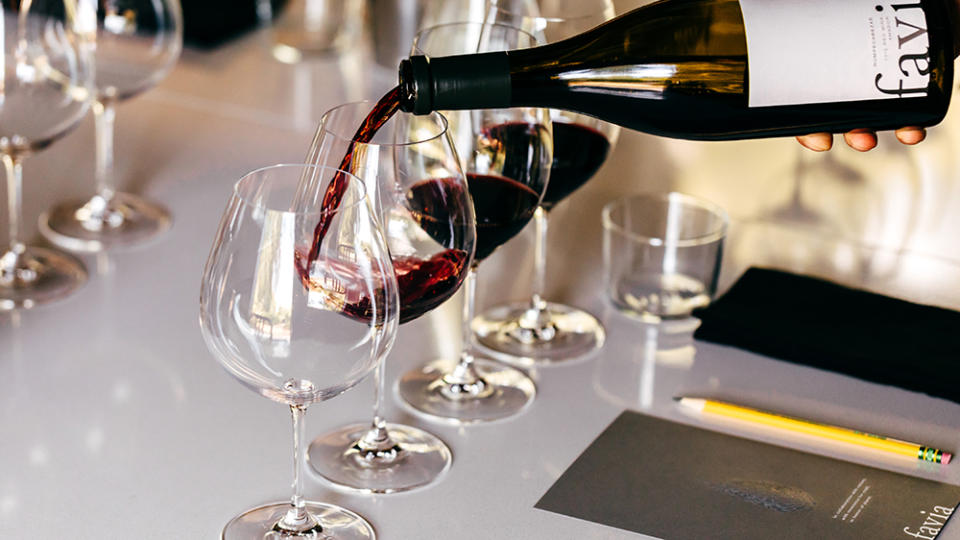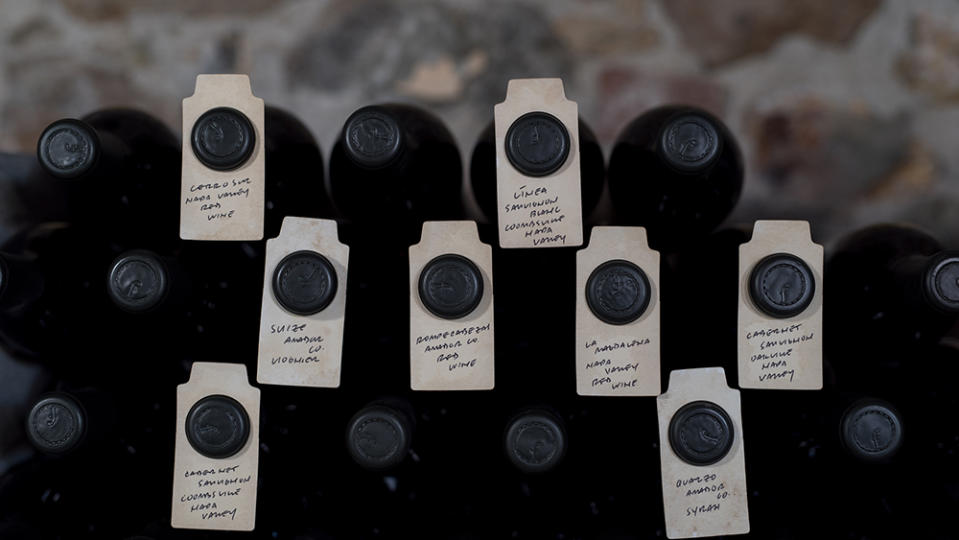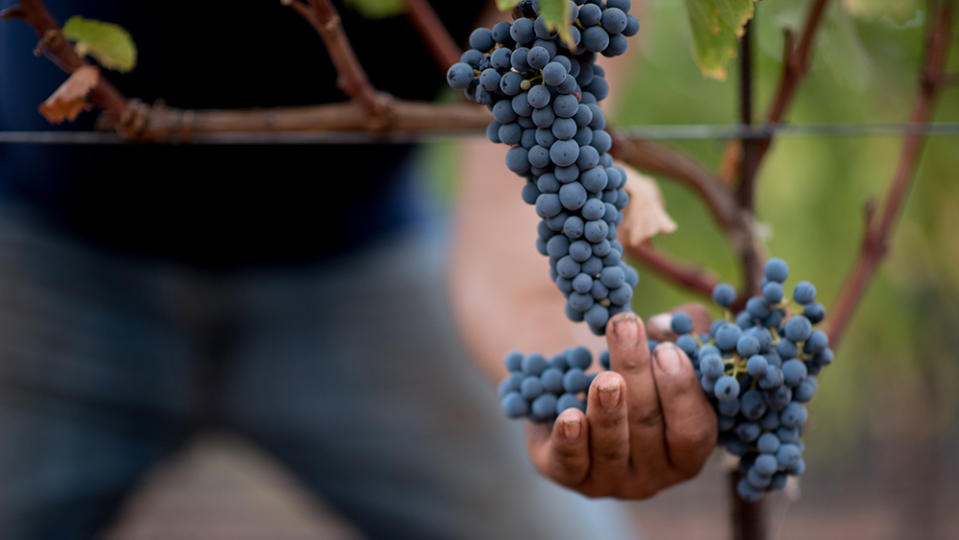This New Winery Is Defying the Odds and Producing Old World-Style Reds

Click here to read the full article.
Crack an old viticulture textbook from UC Davis, and it will tell you that the Coombsville region, in the southeastern corner of Napa Valley, is too cool to ripen Bordeaux grapes—Cabernet, Merlot and their cousins. A newer primer would have quite a different message about what is now the newest of Napa’s American Viticultural Areas (AVAs), the valley’s 16th. Despite the ironic fact that there are few actual wineries in Coombsville, just east of the city of Napa itself, its fruit has become highly sought-after for the elegant, almost old-world-style reds it can produce.
From the miniature crushpad of his Favia winery (possibly the tiniest in Napa), Andy Erickson, who has the likes of Screaming Eagle, Harlan and Dalla Valle wines on his résumé, points to the main geographic feature responsible for the soil here: a perfect half-circle of mountains
to the east, surrounding the vineyards. “Cup and saucer,” they call the arrangement. Cooling breezes off San Pablo Bay every afternoon are pooled and circulated by this part of the Vaca Range. On any given hot summer day, according to Erickson, it’s 10 degrees cooler here than in the northern end of the valley. But with modern vineyard management, in these cooler temperatures, winemakers can find ripeness and restraint at the same time—a balance of generous fruit, polished tannins and minerality (the volcanic soils here ensure the last).
More from Robb Report
First Drive: Why the 2020 Lincoln Aviator Elevates American-Made SUVs
Has This $3,500 Bottle of Wine Just Set the New Bar for Napa Cabernet?
Future Be Damned: Here Are Some Stand-Out New Reds We Can't Wait to Pour
Erickson’s winery, which he owns with his viticulturist wife, Annie, is a slice of the history of this place named for Nathan Coombs, founder of the city of Napa. The small, handsome regiment of red-banded barrels of Favia’s Coombsville wine represent a style on the cutting edge of Napa Valley winemaking.

Gone is the thirst for overwrought, über-ripe, high-alcohol Cabernets of the late 1990s and early aughts. The buzzwords now are “freshness,” “brightness” (read: good acidity) and “finesse.” Erickson describes the Coombsville character that matches up with that trending taste. Although the wines can achieve plush, generous ripeness, he says, “they have a real savory side—not just blackberry and cassis. There’s pencil lead, sage, dried herbs, crushed stone… a more European style, but still with the power you expect in Napa.”
For those lucky enough to acquire it, the Favia 2012 “Whipsaw” Coombsville Red, a 50-50 blend of Cabernet Sauvignon and Cabernet Franc (a variety Erickson loves) is proof enough of the beautiful balance the region is capable of. Made only once, and only in magnums ($575), the seven-year-old has reached a “plateau of goodness,” says Erickson, with gorgeous earth, florals, mint, herbs, dark berries and chocolate backed by structure and rich texture. But look to the Favia 2016 Coombsville Cabernet Sauvignon ($175) as well, for bright but generous red fruit, florals and savory earth character, with lovely, resolved tannins.
Other brands that make elegant arguments for Coombsville: Covert, Meteor Vineyard, Hobbs Nathan Coombs Estate, Farella Vineyard and Mi Sueño Carpignano Vineyard. These are wines to explore for collectors looking for that elusive, contradictory character—drinkable now but worthy of cellaring.
Check out more photos of Favia winery below:





Sign up for Robb Report's Newsletter. For the latest news, follow us on Facebook, Twitter, and Instagram.
